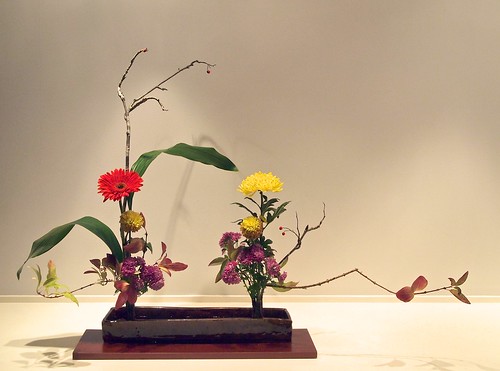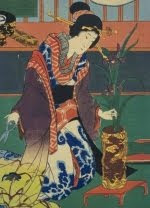Rikka inspired arrangement, Suna-no-mono style with two groups.
Here comes another Rikka inspired arrangement (Klick here for an earlier blog post in this series). I'd like to point out again very clearly that I don't aspire to create genuine Rikka arrangements, that's why I call them Rikka inspired. This is not out of disrespect for the traditional styles, but rather an attempt to gain a brief understanding of the old principles that are still important in all ikebana styles.
This time I've been looking into the Suna-no-mono style with two groups, Futakabu-ike. I've used Rowan branches, a Gerbera, three kinds of Chrysanthemum, Aspidistra leaves and Cornus branches with autumn leaves.
Suna-no-mono, translates to "sand and things". The style with two separate groups represents two countryside islands surrounded by the sea. This old historical style is the origin of variation no 5 in the Sogetsu school curriculum, Kabu-wake, arrangement in two groups with water in-between.
If you want to know more about the Rikka style, there is a short introduction of it's origin and develop on the website of Ikenobo headquarters in Kyoto.
This time I've been looking into the Suna-no-mono style with two groups, Futakabu-ike. I've used Rowan branches, a Gerbera, three kinds of Chrysanthemum, Aspidistra leaves and Cornus branches with autumn leaves.
Suna-no-mono, translates to "sand and things". The style with two separate groups represents two countryside islands surrounded by the sea. This old historical style is the origin of variation no 5 in the Sogetsu school curriculum, Kabu-wake, arrangement in two groups with water in-between.
If you want to know more about the Rikka style, there is a short introduction of it's origin and develop on the website of Ikenobo headquarters in Kyoto.














No comments:
Post a Comment